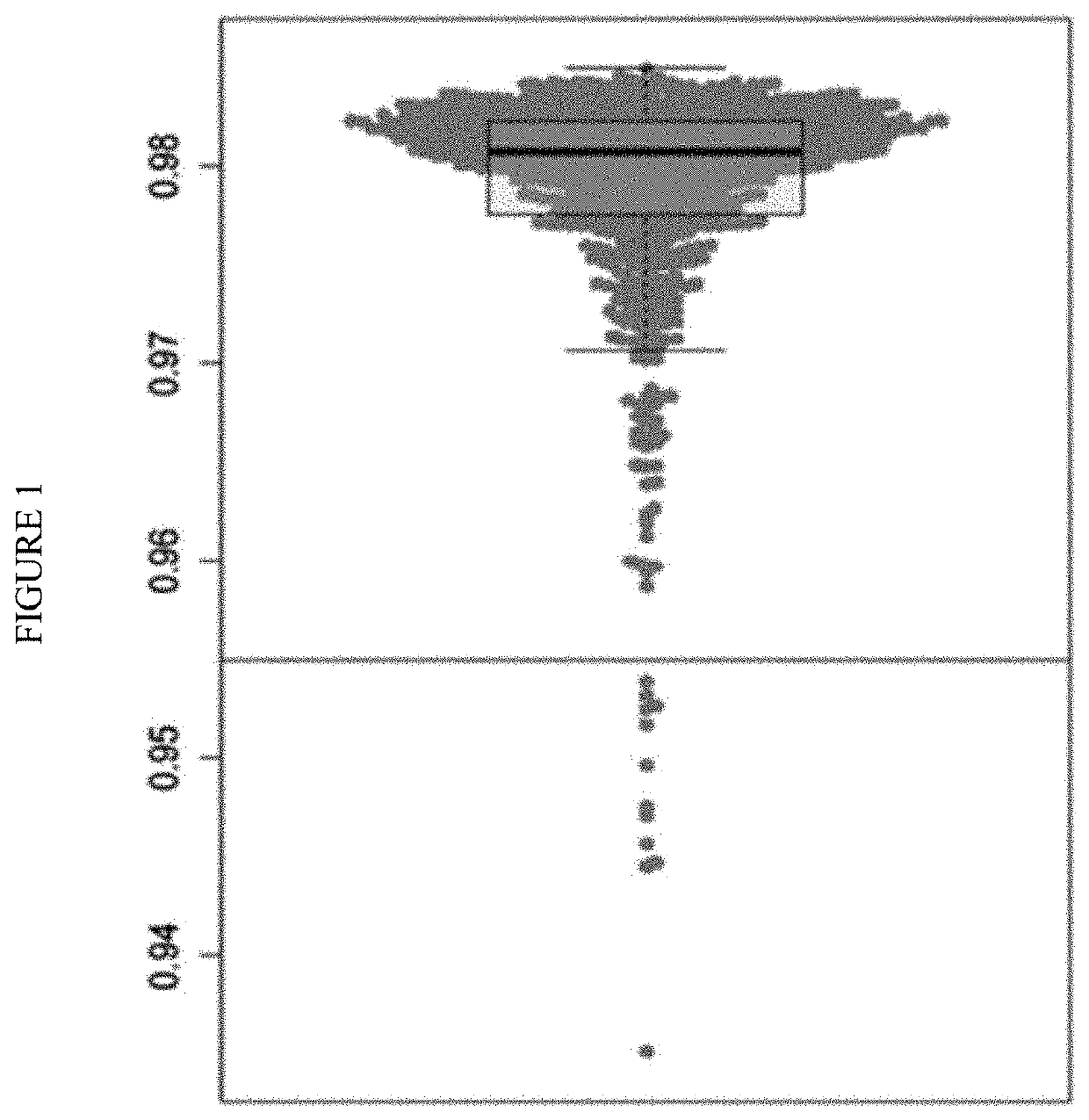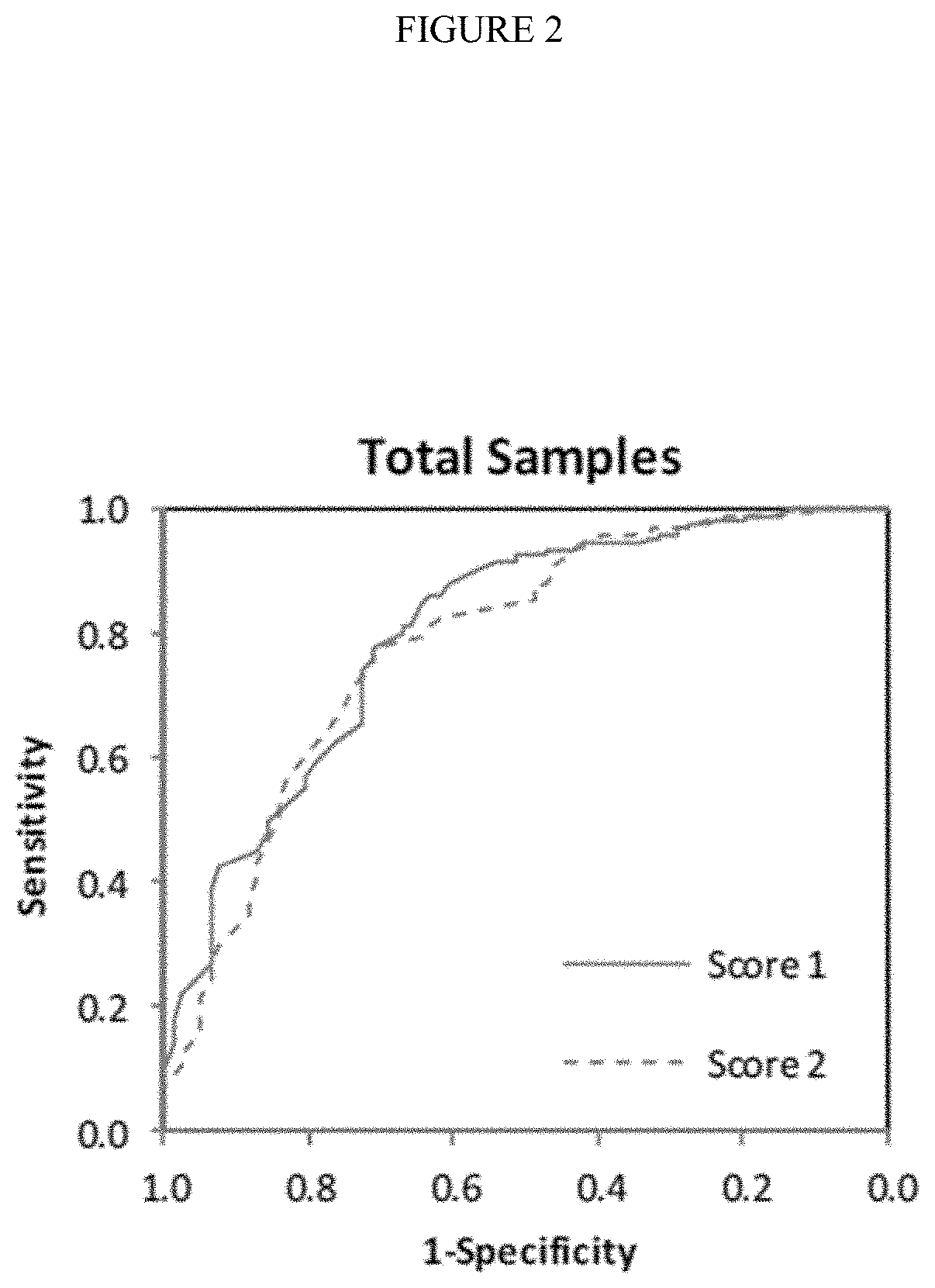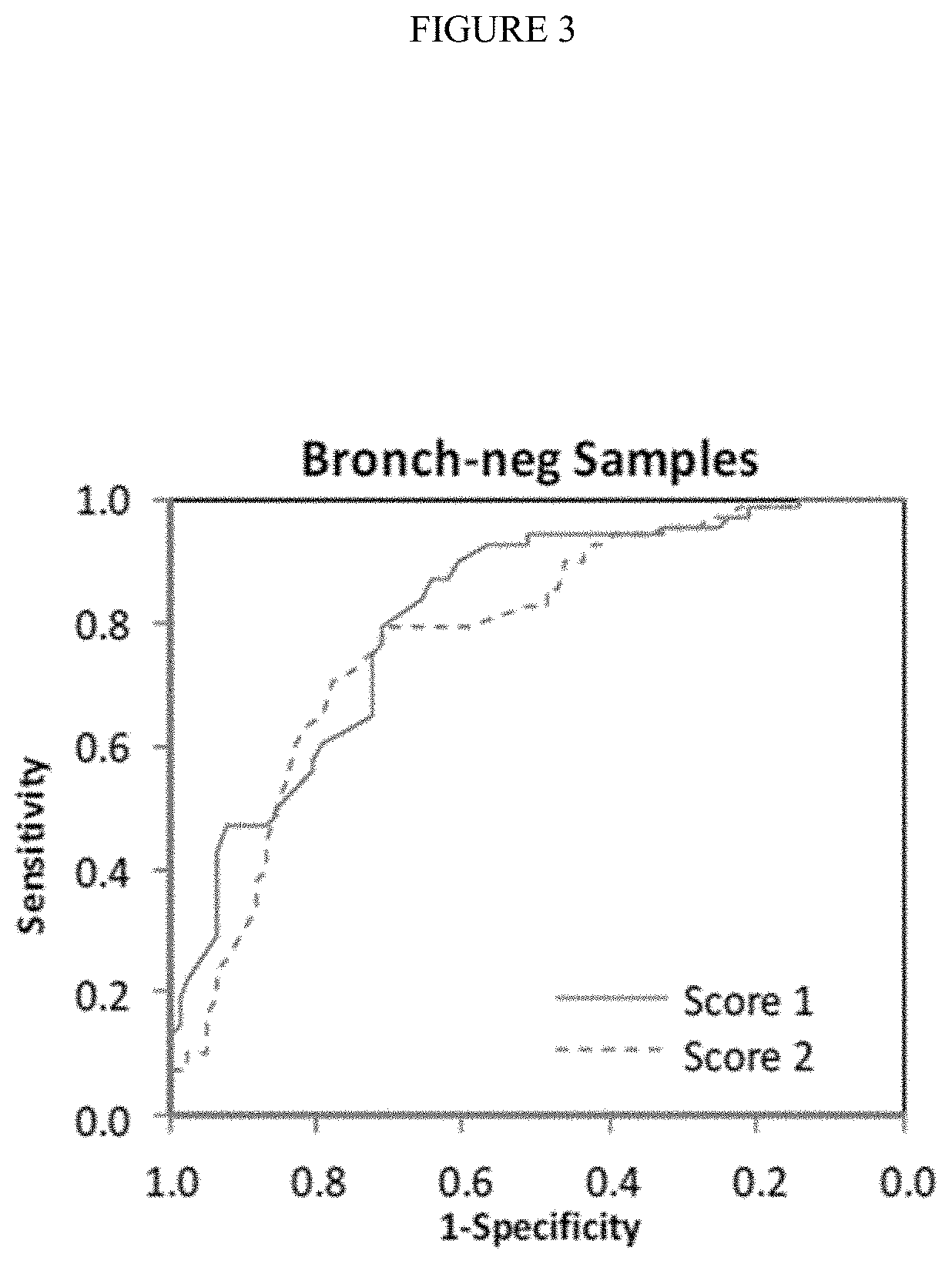Methods for evaluating lung cancer status
a technology of lung cancer and status, applied in the field of methods and compositions for assessing cancer status using gene expression information, can solve problems such as difficulty in reaching by standard techniques such as bronchoscopy
- Summary
- Abstract
- Description
- Claims
- Application Information
AI Technical Summary
Benefits of technology
Problems solved by technology
Method used
Image
Examples
example 1
nt of a Microarray Based Prediction Model Introduction
[0126]This example describes a method for developing a prediction algorithm. A final optimized model is described, including the combination of genes used in the model. The method uses Clinical Factor Genomic Correlates (CFGC) to aid in the selection of a cancer-specific signature.
[0127]The objectives were to develop and characterize a new cancer prediction model that effectively predicts lung cancer status after accounting gene expression signal attributed more specifically to clinical factors by deriving genomic correlates. Genomic correlates are defined herein as gene expression algorithms to predict the specific clinical characteristics, such as subject gender, smoking status, and smoking history.
[0128]An objective was to develop a prediction algorithm that meets the following specific performance criteria:
[0129]Negative Predictive Value (NPV) of greater than 90% for ruling out lung cancer in an intended use population, and
[0...
example 2
n of Bronchial Genomic Classifier for Lung Cancer Patients Undergoing Diagnostic Chronchoscopy
INTRODUCTION
[0169]Bronchoscopy is frequently non-diagnostic in patients with pulmonary lesions suspicious for lung cancer. This often results in additional invasive testing, although many lesions are benign. We sought to validate a bronchial gene expression classifier that could improve the diagnostic performance of bronchoscopy.
[0170]Lesions suspicious for lung cancer are frequently identified on chest imaging. The decision of whether to pursue surveillance imaging or an invasive evaluation requiring tissue sampling is complex and requires assessment of the likelihood of malignancy, ability to biopsy, surgical risk, and patient preferences [1]. When a biopsy is required, the approach can include bronchoscopy, transthoracic needle biopsy (TTNB), or surgical lung biopsy (SLB). The choice between these modalities is usually determined by considerations such as lesion size and location, presen...
example 3
n of Bronchial Genomic Classifier for Lung Cancer Patients In Patients Undergoing Diagnostic Chronchoscopy
Introduction
[0208]Lung cancer remains the leading cause of cancer mortality in the United States, with an estimated 224,000 new diagnoses, and 160,000 deaths in 2014, 90% of which are due to smoking [24]. Recently, the National Lung Cancer Screening Trial showed that low dose Computed Tomography (CT) screening results in a 20% relative mortality reduction in high risk individuals [25]. The mortality reduction, however, was accompanied by a high rate (˜96%) of false-positive CT findings, which in turn has generated concern for the overutilization of invasive diagnostic procedures [26].
[0209]Patients with suspected lung cancer are often referred for bronchoscopy where the primary aim is to sample a suspicious pulmonary lesion for pathological analysis. It is estimated that 500,000 bronchoscopies are performed per year in the U.S. [27], of which roughly half are for the diagnosis o...
PUM
| Property | Measurement | Unit |
|---|---|---|
| imaging analysis | aaaaa | aaaaa |
| magnetic resonance imaging | aaaaa | aaaaa |
| nucleic acid | aaaaa | aaaaa |
Abstract
Description
Claims
Application Information
 Login to View More
Login to View More - R&D
- Intellectual Property
- Life Sciences
- Materials
- Tech Scout
- Unparalleled Data Quality
- Higher Quality Content
- 60% Fewer Hallucinations
Browse by: Latest US Patents, China's latest patents, Technical Efficacy Thesaurus, Application Domain, Technology Topic, Popular Technical Reports.
© 2025 PatSnap. All rights reserved.Legal|Privacy policy|Modern Slavery Act Transparency Statement|Sitemap|About US| Contact US: help@patsnap.com



